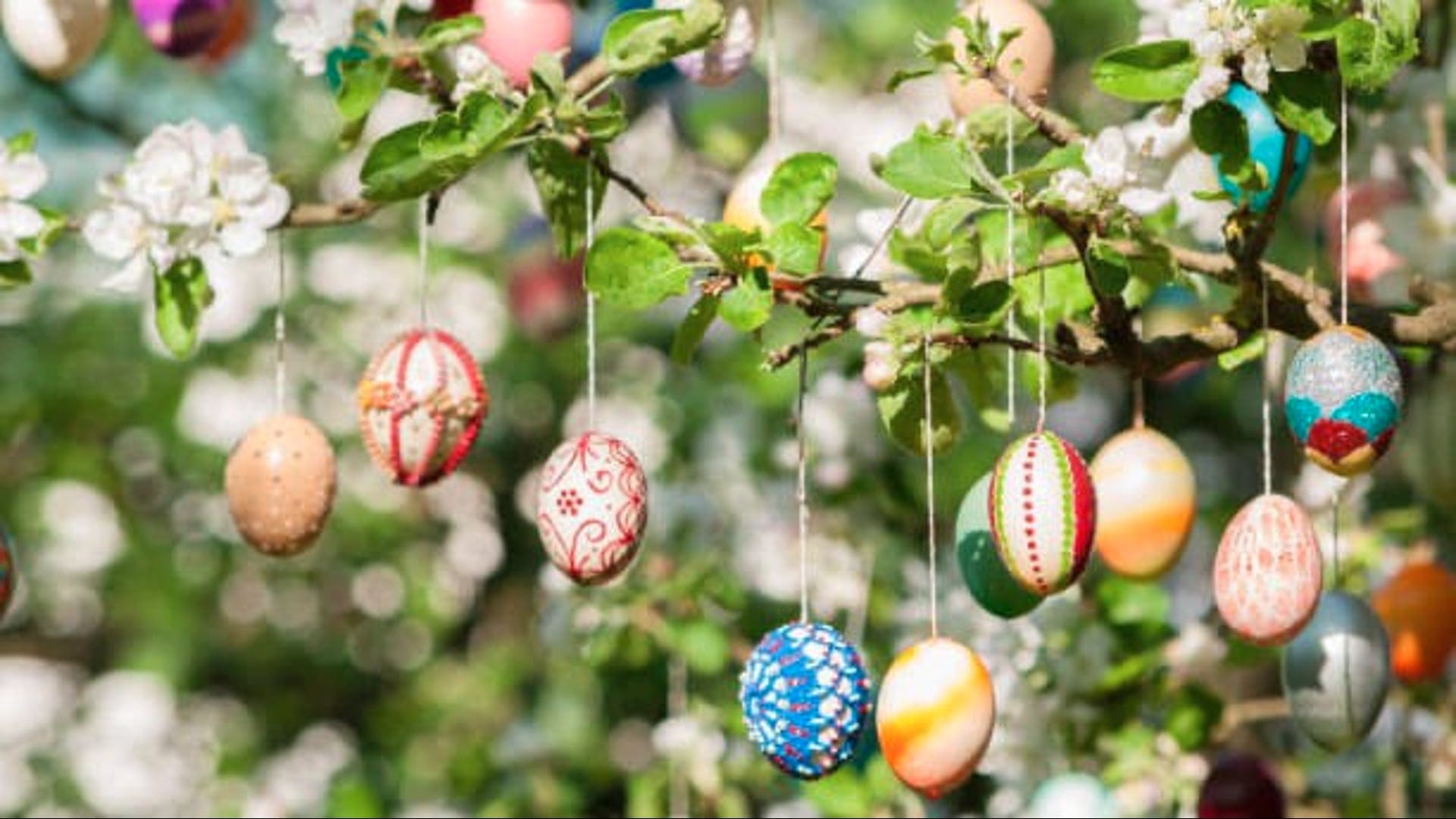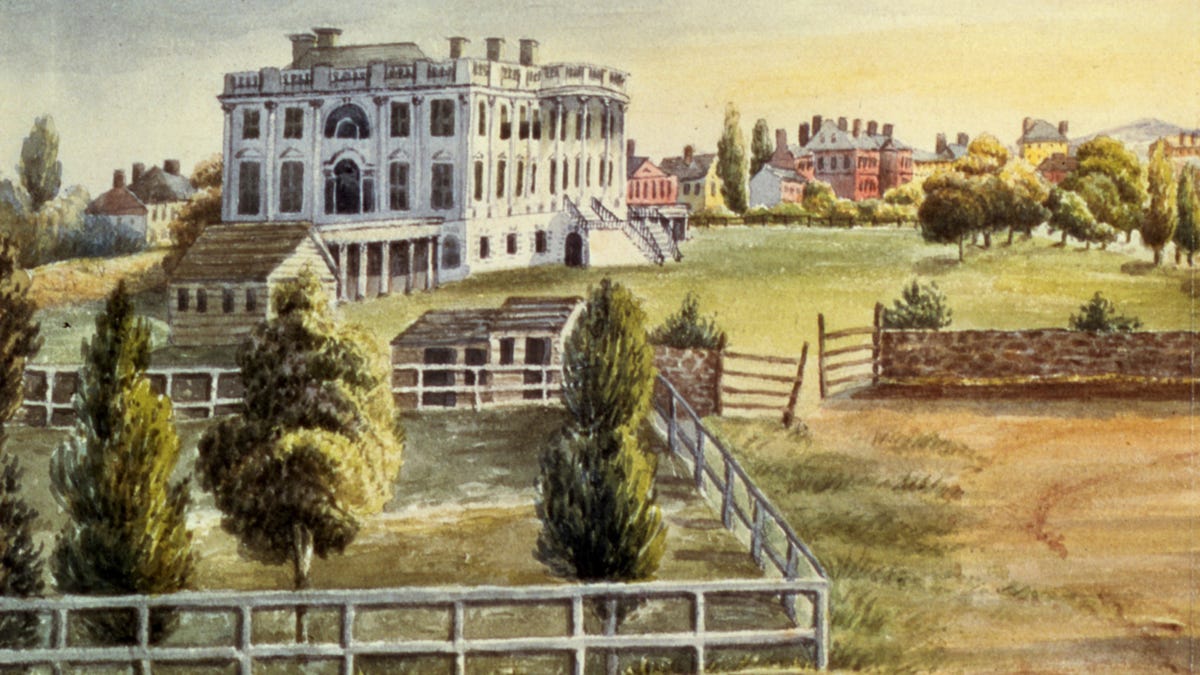In every bloom, every Easter celebration, and every open gate, the White House grounds and spring traditions offer a living connection to American history.

Easter traditions: How it’s celebrated around the world
Did you know that Easter isn’t always just celebrated with chocolate? Easter is marked very differently around the globe.
unbranded – Lifestyle
Each spring, the White House grounds bloom not just with flowers and tree blossoms but also with the legacy of those who shaped them – and with opportunities to step into living history.
From the earliest days of the republic to the present, White House spring traditions, like the grounds themselves, have been shaped by the vision of presidents and first ladies, renowned landscape architects and generations of dedicated gardeners.
Throughout the 1800s, the Executive Mansion’s grounds were largely an extension of the presidential family’s household operations. In a nation still dominated by family farms, the early White House lawns looked a lot like many other household yards, with laundry hanging, dairy cows and sheep grazing, and food growing to supply the kitchen.
Presidents gradually began using the White House’s outdoor spaces for more public ceremonies and gatherings. Today, the grounds surrounding 1600 Pennsylvania Avenue have become as iconic as the rooms and furnishings inside, especially at the moment when winter gives way to warmer weather.
How the White House grounds were created
President Thomas Jefferson was the first to devise a landscaping plan for the White House grounds. He envisioned a sweeping lawn with tree-lined promenades, though his plan was only partially implemented. Two decades later, in the 1820s, President John Quincy Adams, an avid horticulturist, spent a considerable amount of time with White House gardener John Ousley, learning and setting the stage for the lush gardens we know today.
For decades, a conservatory and a series of glass-roofed structures next to the White House provided space to grow domestic and exotic plants, including orchids, ferns, grapes, geraniums, roses and camellias.
In 1902, the structures were demolished as part of the Theodore Roosevelt renovation – a major change in the use of the grounds, including designating the side for the presidential workspace we know today – the West Wing.
The most significant transformation came in the 1930s when Franklin D. Roosevelt commissioned landscape architect Frederick Law Olmsted Jr., whose father helped design New York’s Central Park, to create a more unified and formal plan for the executive grounds. The National Park Service continues to use the Olmsted plan as the basis for its maintenance of the grounds, with first families also adding their touches.
First lady “Lady Bird” Johnson created the Children’s Garden, a small but charming space tucked away south of the West Wing. It features a whimsical collection of engraved stepping stones with the handprints and footprints of presidential grandchildren.
White House Garden Tours have become popular
First lady Pat Nixon launched the now-traditional and very popular spring and fall garden tours in 1972. (The most recent open house was held earlier this month; autumn tours are generally in October.)
To both stock the White House kitchen as well as promote healthy eating and locally grown produce, first lady Michelle Obama started the White House Kitchen Garden in 2009, showcasing heirloom vegetables, herbs and seasonal crops, with a nod to the grounds’ earliest uses.
Even the trees at the White House have stories to tell. Many on the grounds are marked with plaques indicating the presidents who planted them – silent sentinels of past administrations.
Some of the greenery and color around the White House and the nation’s capital owe a debt to first lady Helen Taft, who had admired the beauty of cherry blossoms while traveling in Japan. In April 1909, the U.S. government purchased 90 trees, and Tokyo’s mayor and city council sent 2,000 more as a gift.
The original donated trees did not survive the journey. A second gift of more than 3,000 cherry trees arrived in 1912 by ocean freighter in Seattle and was transported across the USA in heated, insulated rail cars. The first lady and the wife of the Japanese ambassador planted the first two cherry trees along the northern bank of the Tidal Basin in late March, where the trees still stand today.
The pink and white petals beckon an estimated 1.6 million tourists to the capital in just a few weeks every year in a cavalcade of spring-break school groups and tour buses.
Tradition of the White House Easter Egg Roll
For many, another springtime White House tradition is the big draw: the White House Easter Egg Roll, the origins of which trace back to the 1870s when families brought children to roll eggs on the U.S. Capitol grounds.
After Congress restricted public use of those grounds, President Rutherford Hayes stepped in to rescue what had become a very popular event.
On Easter Monday, 1878, he opened the White House South Lawn to children for egg rolling, inaugurating a tradition that is celebrated today with storytelling, music, holiday mascots, crafts, and with both real and souvenir wooden eggs. Presidents and first families often join in, at times offering welcoming remarks from the South Portico with an Easter Bunny by their side.
To make some of the White House rites of spring more accessible to anyone who cannot attend in person or who simply wants to learn more, the White House Historical Association, in recent years, added a virtual White House springtime scavenger hunt. The 360-degree online tour and interactive game features fun facts about the history of the White House, its springtime traditions and the people who have lived in the Executive Mansion.
As the National Park Service’s former director of White House Liaison, Jim McDaniel, told me on a 1600 Sessions podcast, “The White House is such an important icon for Americans. To be able to come close to it, to go up to the fence, to see it, to go through the grounds on an Easter egg roll or garden tours gives them a touchstone for their government and their democracy.”
In every bloom, every Easter celebration, and every open gate, the White House grounds and spring traditions offer a living connection to American history.
Stewart D. McLaurin is president of the White House Historical Association, a private nonprofit, nonpartisan organization founded by first lady Jacqueline Kennedy in 1961, and is director of The People’s House: A White House Experience multimedia educational center and museum.
